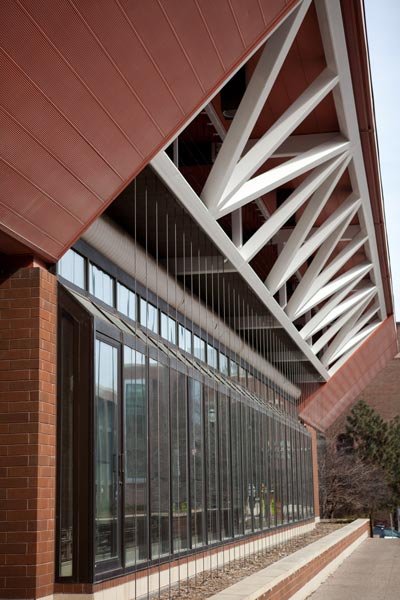Research Facilities in the Civil Engineering Building
The underground Civil Engineering Building houses the department’s administrative offices, classroom and study spaces, and several research facilities including
- C. Edward Bowers Fluid Mechanics Laboratory
- Michael M. and Nancy L. Heuer Soil Mechanics Laboratory is an instructional laboratory housing all the equipment necessary for testing and characterization of soil, including permeability analysis and direct shear and triaxial testing, as well as several demonstration benches (quicksand, shear failure).
- Minnesota Traffic Observatory (MTO), a transportation laboratory focused on testing and evaluating new technologies for transportation management, operational strategies, and traveler information
- Pavement Materials Laboratory is equipped with state-of-the-art testing equipment for asphalt binder, asphalt mastic, and asphalt mixtures
- W. David Lacabanne Rock Mechanics Laboratory renovated in 2021, this lab boasts the patented rock strength device
- Theodore V. Galambos Structural Engineering Laboratory (named for the father of Load and Resistance Factor Design, LRFD) is a four-story space designed for modeling and testing large-scale structural components
- Waves and Imaging Laboratory, a laser vibrometer-equipped laboratory focused on the experimental investigation of wave phenomena in solids and structures, proof-of-concept characterization of new architected materials, and imaging and diagnostics of geomechanical and structural systems
The Civil Engineering Building is also home to the Clifford I. and Nancy C. Anderson Student Innovation Labs Student Shop, a working space for everyone within the College of Science and Engineering.
The Civil Engineering Building received the American Society of Civil Engineers’ prestigious Outstanding Civil Engineering Achievement Award when it opened in 1983. Designed for maximum energy efficiency and use of underground space, more than 95 percent of the building is underground. The lowest level reaches 110 feet below the surface.
